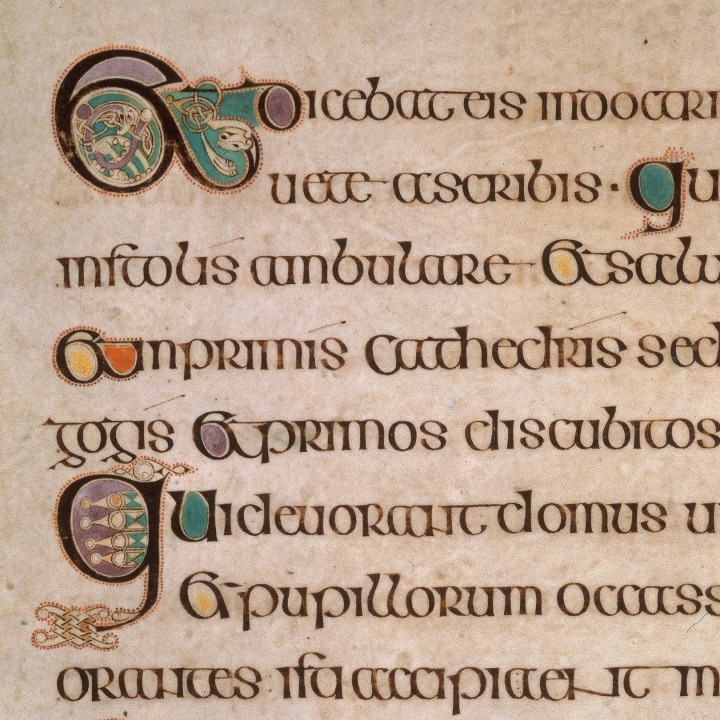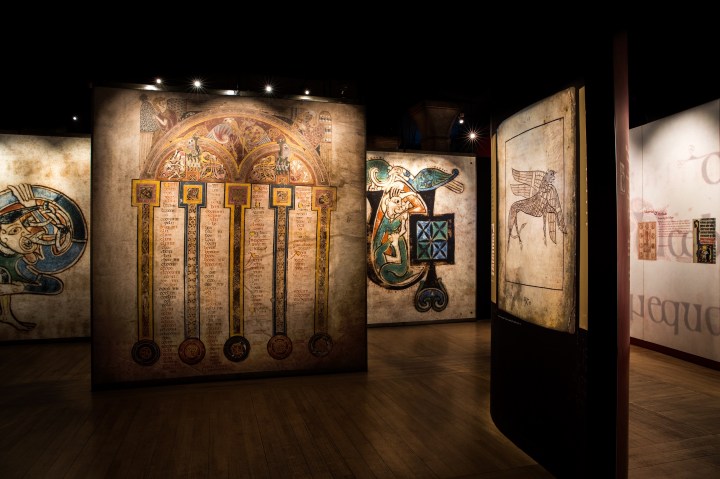
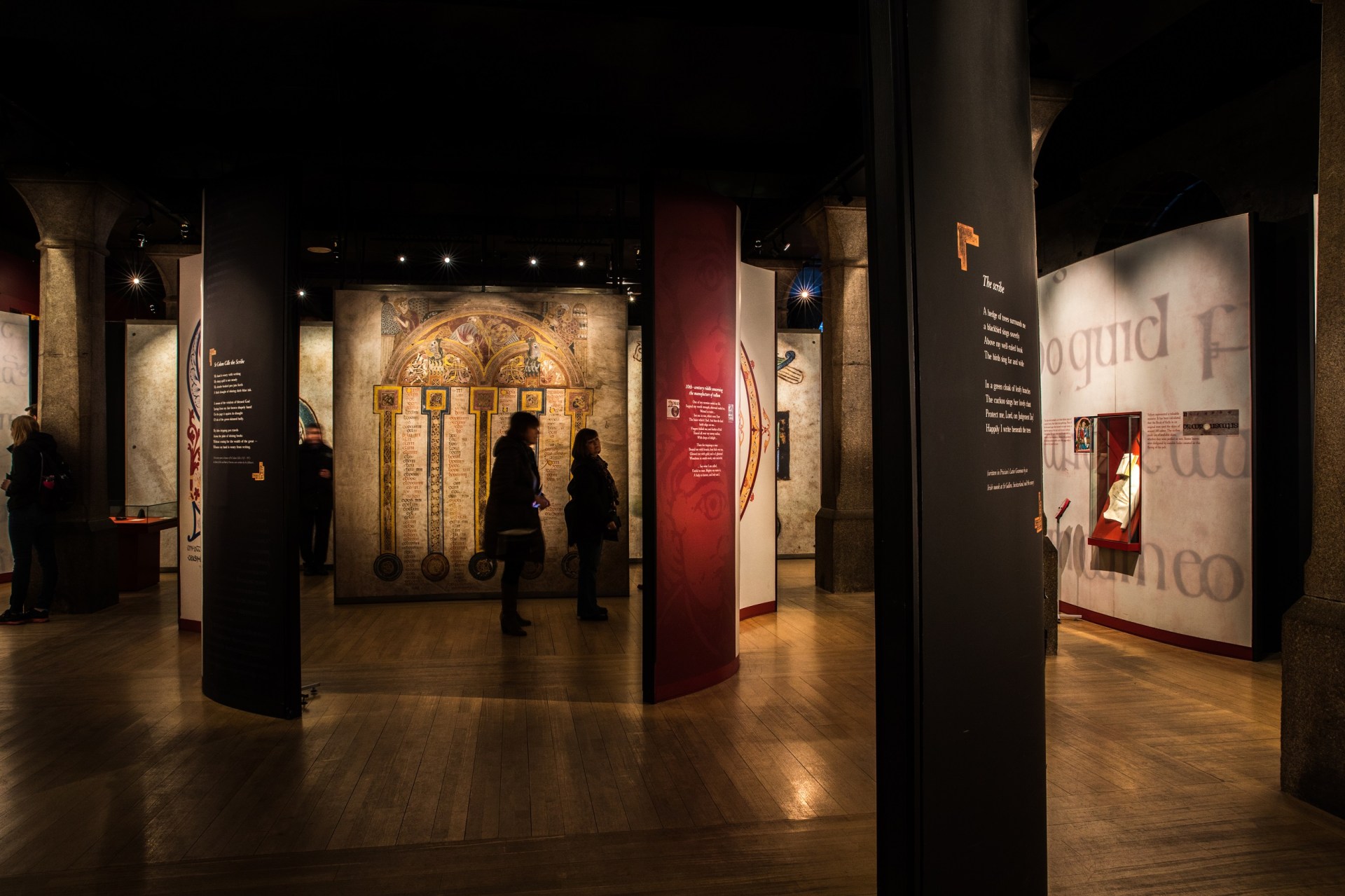
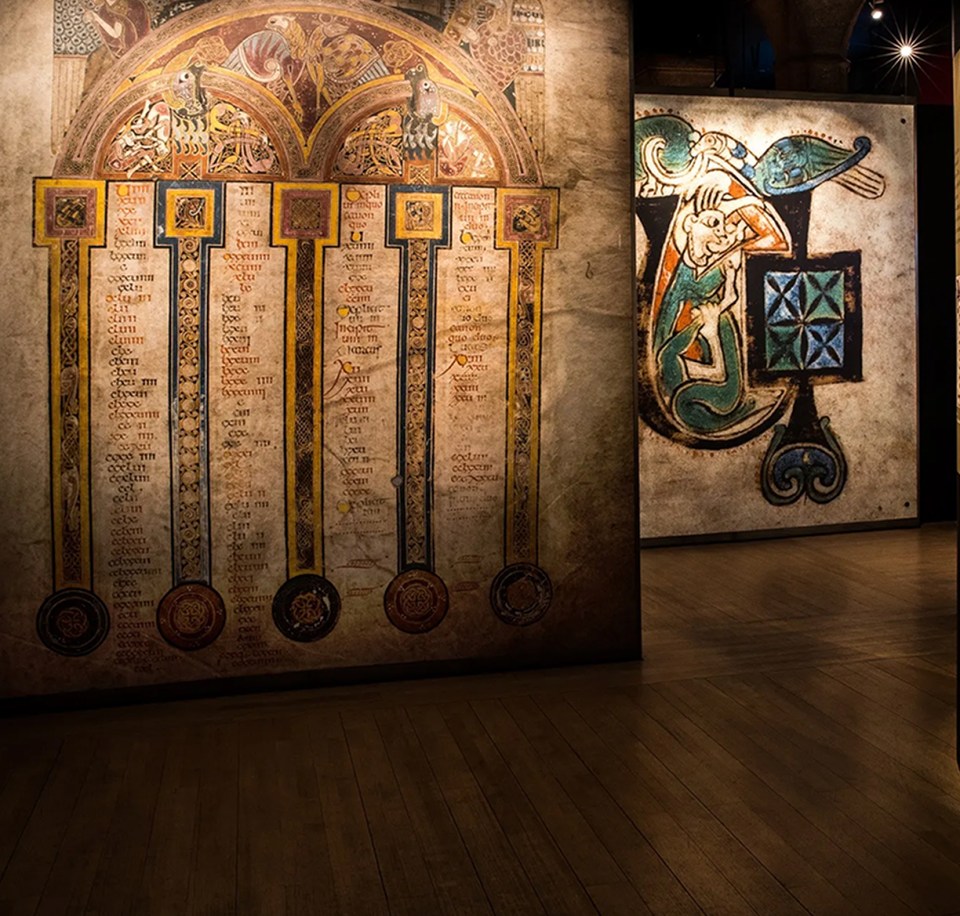
What is the Book of Kells?
A guide to its history,
art and meaning
History of the Book of Kells
When young monks toiled over this religious manuscript over 1,200 years ago, they couldn’t have imagined that their work would become one of the most famous medieval manuscripts in the modern world and a cornerstone of Irish cultural heritage.
The 680-page manuscript contains the four Gospels of the New Testament: Matthew, Mark, Luke, and John. It is written in Latin on prepared calfskin, also known as vellum.
The book is renowned for the extraordinary quality and unique style of its artwork. The astonishingly intricate and vibrant decoration includes elaborate Celtic knot patterns, fascinating mythical creatures, and rich Christian symbolism. We’ll delve into more detail on that later.
A book this precious was not designed for everyday use. It was made to be a ceremonial object, kept in a shrine, and displayed on an altar during important religious services.
You can only imagine the astonishment its vibrant colours and intricate illustrations caused in those original viewers. It’s still weaving the same magic today. In fact, the art and illustrations are often described as “the work of angels”.
Who created the Book of Kells
It wasn’t the angels who created the Book of Kells. The monks who wrote and illustrated the manuscript may have been as young as 18. Life expectancy was lower in 800AD so this was a mature adult age at the time.
These monks would have lived in a monastery dedicated to the production and reading of sacred texts. It was not always a peaceful and quiet life. These monasteries were often targeted by Vikings who would pillage and plunder them for valuables.
While they were very dedicated, these hardworking monks and scribes were humans too. Their long hours of work, bent over writing tables in the scriptorium (the monastery’s dedicated writing room), occasionally show in their work. You can see them in margin notes such as “I’m tired of this!”, or through mistakes such as lines being repeated.
The incredible talent and skills of these scribes continue to astonish viewers today through the creativity and vividness of the book they created in their isolated monastery.
Where was it created?
It’s thought that the Book of Kells was made, at least in part, at the monastery of St Colum Cille (Columba) on Iona. Iona is an island off the coast of modern-day Scotland.
Being an island, Iona was vulnerable to Viking raids. In the 9th century after several Viking raids on Iona, including one where 68 monks were killed, the surviving monks fled. They took the book with them in an open boat across the sea to their sister monastery in Kells, Ireland.
Having survived the Vikings and the sea journey, Kells is where the book was most likely completed and where it got its name.
The book remained in Kells, surviving a theft in the 11th century that removed the valuable shrine, likely a richly decorated gold protective casing, that protected it. This may have been when pages went missing from the beginning and end of the book, leaving us to wonder what magnificent art was lost.
Political upheaval during the mid-17th century put the Book of Kells in danger again. Bishop Henry Jones moved the book, presenting it to Trinity College Dublin in 1661 for safekeeping. It has remained in the care of the university ever since.
The influence of Book of Kells on Irish culture
The Book of Kells is considered to be Ireland’s greatest cultural treasure. Its distinctive Celtic knotwork, iconic initials and animal based designs have inspired legions of artists and creatives across the centuries.
The designs and motifs have become an essential part of Irish national identity, instantly recognisable and interwoven with Irish culture.
They appear in many places; from Ireland’s postage stamps and currency, through motifs on Irish dancing costumes, to everyday items such as tourist souvenirs. They are synonymous with Ireland.
Beyond its artistic impact, the Book of Kells stands as a testament to Ireland’s rich early Christian history and scholarly tradition. Its resilience and survival when so many manuscripts were lost makes it ever more precious.
Where is the Book of Kells today
Despite its age and the many adventures it has endured, the Book of Kells is now on permanent display at the Old Library, Trinity College Dublin. Access for visitors is included in tickets to the Book of Kells Experience.
You can see two pages at a time when visiting. It takes approximately 30 years to get through the entire manuscript so very few people have seen all 680 pages!
How is the book protected
Books of this age need to be treated with great care. The book is kept in a protective case in a climate controlled environment in the Treasury of the Old Library in Trinity College Dublin. No photography is allowed due to the sensitive nature of the manuscript.
Our conservation work means that the Book of Kells will be preserved for visitors to experience for generations to come. You can view a digital copy of the Book of Kells online but nothing compares to seeing this magnificent treasure in person.
Explore the pages
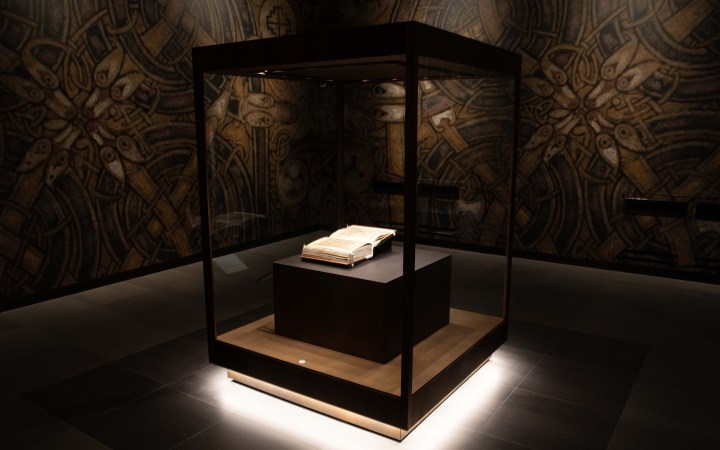
Learn about page openings with experts on the Book of Kells
Video gallery
Delve into the pages
Delve into the pages
Get behind the scenes knowledge
Get behind the scenes knowledge
FAQs
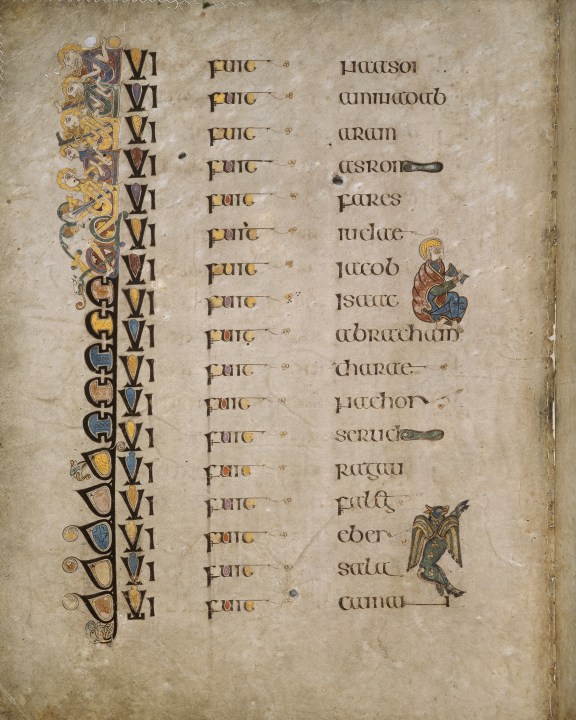
It is called the Book of Kells because it was kept at the monastery in Kells, Co. Meath, Ireland, from the 9th century until 1661.
Its survival for over 1,200 years is remarkable, but what truly sets it apart is the unparalleled beauty of its artwork. Learn more about why the book is important.
Photography in the Treasury where the Book of Kells is housed is forbidden due to the sensitive nature of the manuscript.
The book was created around 800AD making it over 1,200 years old.
The religious manuscript contains the four Gospels of the New Testament: Matthew, Mark, Luke and John.
The book is kept in a climate controlled protective case in the Treasury of the Old Library in Trinity College Dublin.
No, the Book of Kells is a ceremonial object and is not used for daily religious services due to its age and fragile nature. It is now primarily an exhibit.
The Book of Kells currently has 680 pages (340 folios). It is believed some pages were lost over time.
Vellum is a type of prepared animal skin, typically calfskin, used as a writing surface for manuscripts like the Book of Kells.
In person, only two pages of the Book of Kells are displayed at a time. A full digital copy is available online.
The Book of Kells is considered priceless due to its historical, artistic, and cultural significance. It is not for sale.
The Book of Kells has been in the care of Trinity College Dublin since 1661.
The Book of Kells is written in Latin.
The Book of Kells is famous for its extraordinarily intricate and vibrant artwork, stunning illustrations of Celtic knotwork, mythical creatures, and Christian symbolism, making it a masterpiece of early medieval illumination.
Blogs by experts

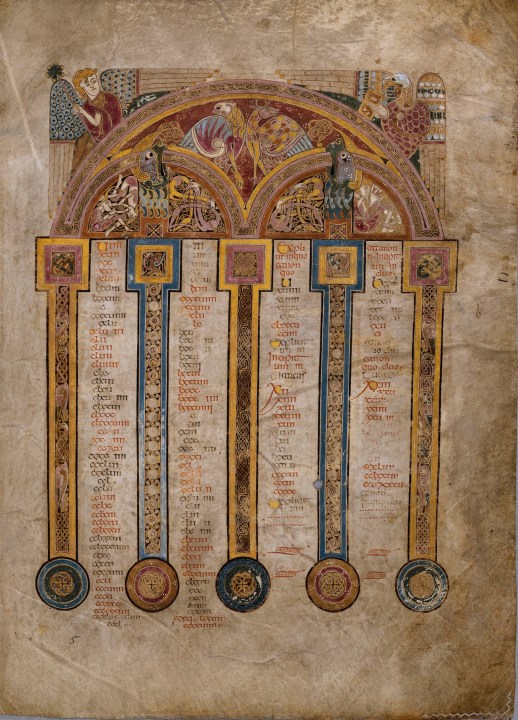
The extraordinary journey of the Book of Kells

5 Surprising Facts about the Book of Kells and Old Library: Insights from a Library Guard
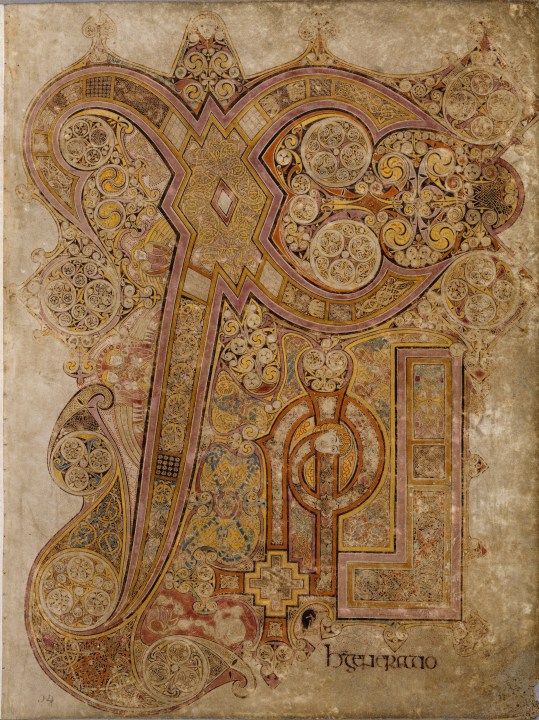
Symbolism in the Book of Kells: the Chi Rho page

Animal symbolism in the Book of Kells
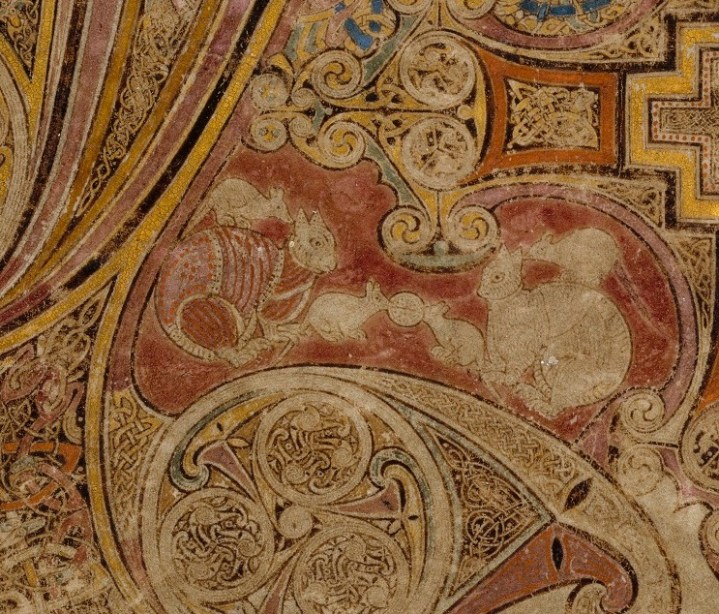
The role of cats in the Book of Kells
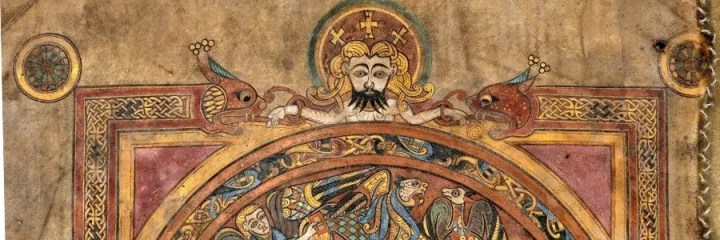
The Book of Kells’ colourful past: whites, pinks and purples
